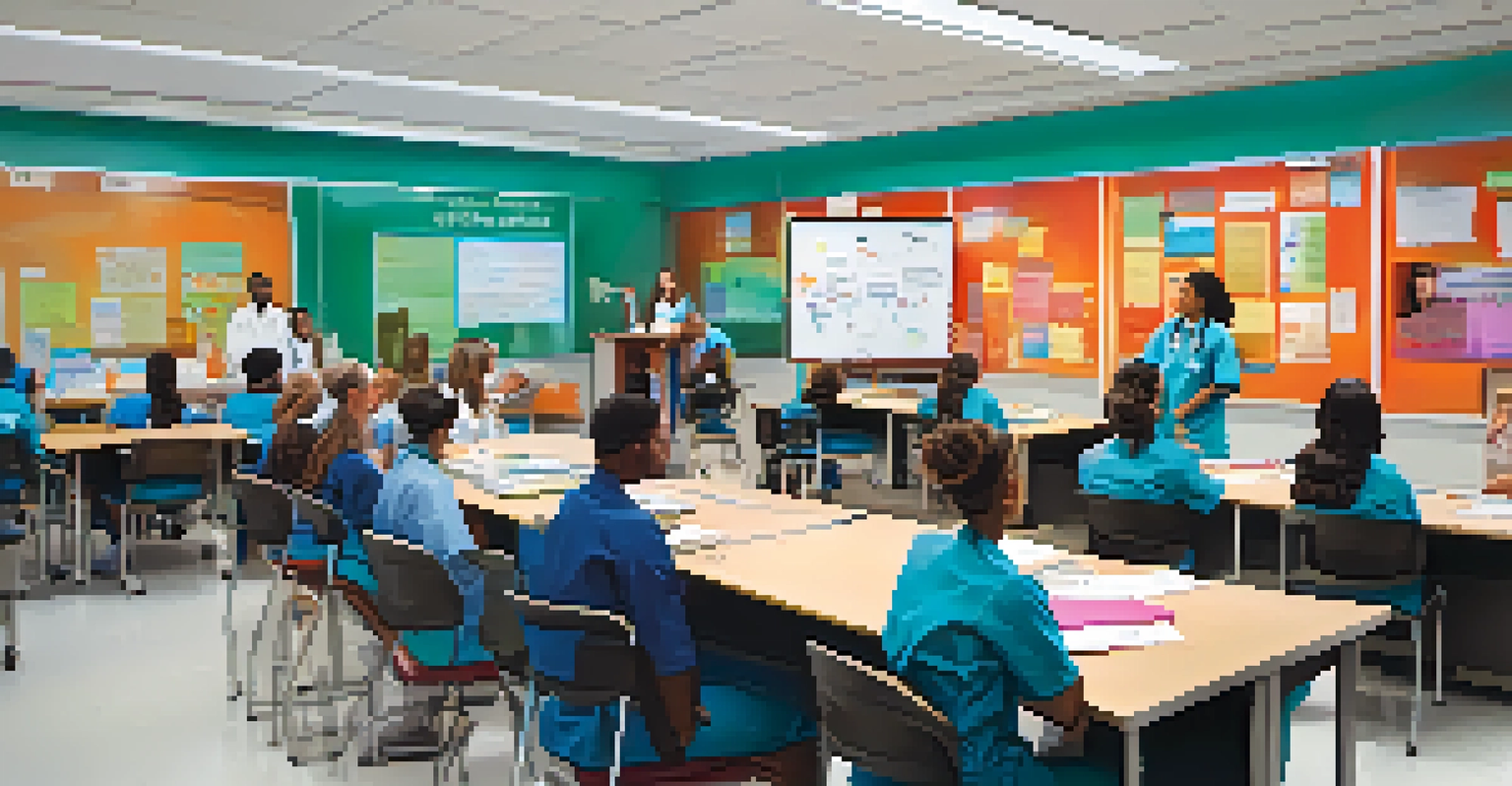Healthcare Workforce in Missouri: Needs and Development

Current State of Missouri's Healthcare Workforce
Missouri's healthcare workforce is diverse, comprising a mix of doctors, nurses, and allied health professionals. However, the state faces challenges in meeting the growing demand for healthcare services, especially in rural areas. With an aging population and the ongoing effects of the COVID-19 pandemic, the need for qualified healthcare workers has never been more pressing.
In the midst of every crisis, lies great opportunity.
In recent years, many healthcare facilities have reported staffing shortages, which can lead to increased patient wait times and reduced quality of care. This gap is particularly noticeable in specialties such as geriatrics and mental health, where the demand for services is high but the supply of professionals is lacking. This situation highlights the urgent need for a strategic approach to workforce development.
To address these challenges, stakeholders must collaborate to identify gaps in the workforce and develop targeted training programs. By investing in education and retention strategies, Missouri can work towards a more robust healthcare system that can meet the needs of its residents.
Identifying Workforce Shortages in Key Areas
Missouri's healthcare workforce shortages are particularly pronounced in rural and underserved urban areas. Many communities lack access to primary care providers, which can lead to health disparities among residents. According to a recent report, certain regions in Missouri have only a fraction of the required physicians to adequately serve their populations.

Moreover, fields such as nursing and mental health are also grappling with severe shortages. For instance, many nursing schools have waiting lists, while mental health professionals are often overwhelmed by demand. This shortage not only affects patient care but also places additional stress on existing staff, leading to burnout and high turnover rates.
Missouri Faces Healthcare Shortages
The state is experiencing significant healthcare workforce shortages, particularly in rural and underserved areas, leading to disparities in access to care.
Recognizing these shortages is the first step toward developing effective retention and recruitment strategies. By understanding where the gaps lie, healthcare organizations can tailor their efforts to attract and retain professionals in these critical areas.
The Role of Education in Workforce Development
Education plays a vital role in preparing the next generation of healthcare professionals in Missouri. Local universities and colleges are stepping up to provide training programs that align with the needs of the community. From nursing degrees to allied health certifications, these programs are essential for building a skilled workforce.
The greatest asset of a nation is its people. The greatest asset of a people is their health.
However, while educational institutions are producing graduates, many still struggle to enter the workforce due to geographic and financial barriers. Scholarships, loan forgiveness programs, and partnerships with healthcare facilities can help bridge this gap. By incentivizing graduates to work in underserved areas, Missouri can ensure a more equitable distribution of healthcare professionals.
Additionally, continuous education and professional development opportunities are crucial for retaining current staff. By fostering a culture of lifelong learning, healthcare organizations can keep their workforce engaged and prepared for the ever-evolving landscape of healthcare.
Leveraging Technology for Workforce Solutions
Technology has the potential to significantly enhance Missouri's healthcare workforce. Telehealth services, for example, have expanded access to care, allowing providers to reach patients in remote areas. This innovation not only alleviates some burden on local healthcare facilities but also opens up new opportunities for healthcare professionals.
Furthermore, technology can aid in workforce management by streamlining administrative tasks and improving communication among staff. Electronic health records (EHRs) and scheduling software can help reduce inefficiencies, allowing healthcare workers to focus more on patient care. These tools can also support data collection on staffing needs, which is vital for strategic planning.
Education is Key for Workforce Growth
Investing in education and training programs is crucial for preparing a skilled healthcare workforce that can meet the demands of Missouri's diverse population.
Embracing technology is not just about improving efficiency; it's about enhancing the overall patient experience and ensuring that healthcare providers can deliver quality care. By investing in tech solutions, Missouri can create a more adaptable and responsive healthcare workforce.
Fostering Diversity in the Healthcare Workforce
Diversity in the healthcare workforce is essential for providing culturally competent care. Missouri's population is increasingly diverse, and it's crucial that healthcare professionals reflect this demographic. A diverse workforce can improve communication, build trust, and enhance patient satisfaction.
To promote diversity, healthcare organizations must actively seek to recruit and retain individuals from underrepresented groups. This can involve outreach programs in local schools and communities, mentorship opportunities, and scholarships tailored for minority students pursuing healthcare careers. By creating an inclusive environment, organizations can attract a wider range of talent.
Moreover, fostering diversity in healthcare not only benefits patients but also enriches the workplace culture. Diverse teams often bring different perspectives and ideas, leading to innovative solutions and improved patient outcomes.
Addressing Retention Challenges in Healthcare
Retention of healthcare workers is a significant challenge in Missouri, with many professionals leaving the field due to burnout and job dissatisfaction. High-stress environments, long hours, and inadequate support can drive even the most dedicated workers to seek opportunities elsewhere. This turnover can disrupt patient care and strain remaining staff.
To combat this issue, healthcare organizations need to prioritize employee well-being. Implementing wellness programs, offering flexible scheduling, and providing mental health resources can create a more supportive work environment. Additionally, recognizing and rewarding hard work can help boost morale and encourage staff to stay.
Collaboration Enhances Workforce Planning
Effective workforce planning in Missouri requires collaboration among healthcare providers, educational institutions, and government agencies to address staffing challenges.
Establishing a strong organizational culture that emphasizes teamwork and support can make a significant difference in retention rates. By investing in their workforce, Missouri can build a more stable and committed healthcare team, ultimately benefiting patients and communities.
Collaborative Efforts for Workforce Planning
Effective workforce planning in Missouri requires collaboration among various stakeholders, including healthcare providers, educational institutions, and government agencies. By working together, these entities can share insights, resources, and best practices to address the state's healthcare workforce challenges. Such partnerships can lead to more coordinated efforts in training, recruitment, and retention.
For instance, healthcare organizations can collaborate with local colleges to create internship programs that provide students with hands-on experience. This not only prepares students for their future careers but also helps organizations identify and cultivate potential employees early on. Furthermore, government support can enhance these initiatives through funding and policy-making.

Ultimately, a collaborative approach to workforce planning will lead to a more resilient healthcare system in Missouri. By aligning efforts across sectors, the state can ensure that it has the right number of qualified professionals to meet the needs of its residents.